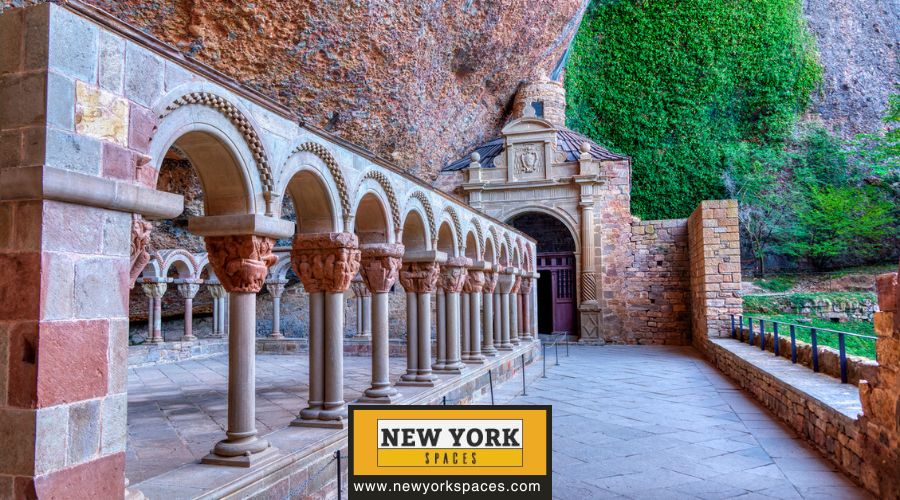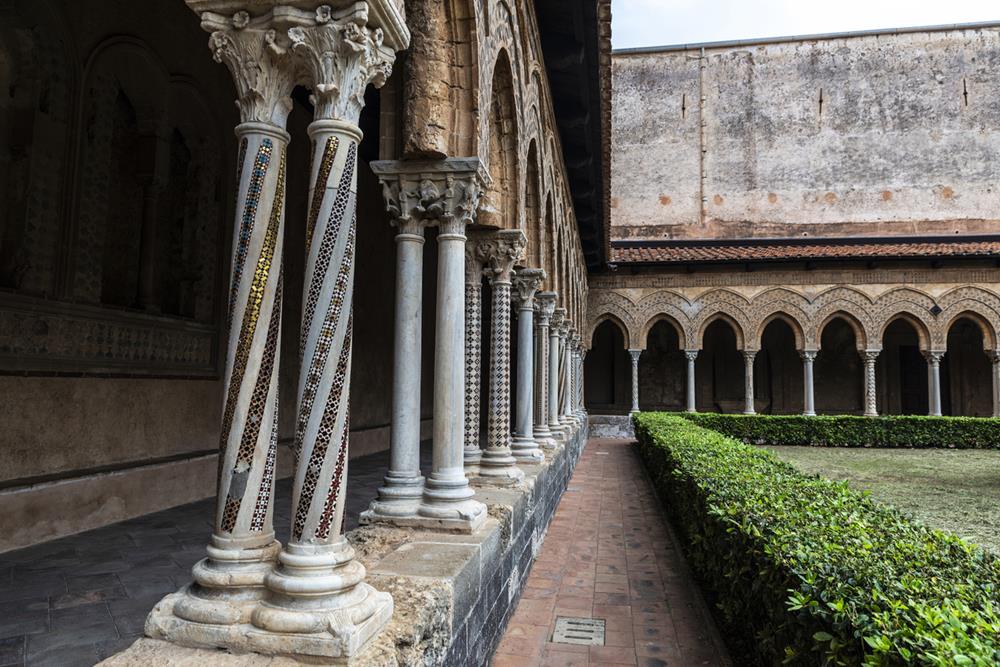Romanesque architecture, a distinctive style that flourished between the 9th and 12th centuries, predominantly in Europe, heralded a revival of stone construction and monumental buildings. Among its defining features, Romanesque columns stand out for their structural and decorative roles, laying the foundation for the architectural marvels of the period.
Historical Context
The Romanesque style emerged from a melting pot of architectural traditions, including the grandeur of Roman architecture, the complexity of Byzantine structures, and innovations from Carolingian and Ottonian building techniques. During the medieval period, the construction of grand religious and secular buildings marked a resurgence in architectural ambition. Romanesque columns played a crucial role in this revival, supporting the weight of stone vaults and arches.
Characteristics of Romanesque Columns
Romanesque columns, integral to the period’s architectural style, marry form with function in their robust and decorative designs. These columns not only support the physical structure of Romanesque buildings but also serve as key elements of artistic expression, featuring a blend of solidity and ornamentation.
Basic Structure and Materials
The quintessential Romanesque column is a study in form and function, meticulously crafted from stone to form a tripartite structure: a sturdy base, a robust shaft, and a decorative capital. This segment delves into the anatomy of these columns, emphasizing the choice of materials—often local stone—that provided the necessary strength and durability for monumental Romanesque structures.
Stylistic Features
Romanesque columns are distinguished by their formidable proportions and a preference for geometric simplicity, a stark contrast to the intricate embellishments of later architectural styles. This overview explores the aesthetic principles underpinning these columns, highlighting how their solid, unadorned forms contributed to the solemn and majestic atmosphere characteristic of Romanesque interiors.
Decorative Elements
The capitals of Romanesque columns serve as canvases for intricate sculptural reliefs, where themes from Christian iconography and abstract motifs coalesce. This discussion unpacks the significance of these decorative elements, exploring how they reflect the theological and cultural milieu of the Romanesque period and examining the techniques and themes that dominate this sculptural art.
Functional Role
Romanesque columns were not merely decorative; they were engineered to support the significant weight of stone vaults and arches, critical to the architecture’s ambitious vertical expanses. This section examines the columns’ structural contributions, detailing how their design and placement were integral to achieving the Romanesque style’s iconic solidity and spatial dynamics.
Types of Romanesque Columns
The diversity of column types in Romanesque architecture reflects the era’s innovative engineering and rich artistic vision. From the simplicity of cylindrical columns to the complexity of compound piers, each type plays a distinct role in the functionality and aesthetics of Romanesque structures.
Cylindrical Columns
Cylindrical columns, characterized by their smooth, rounded shafts, are a hallmark of Romanesque architecture, especially prevalent in nave arcades and cloisters. This subsection explores their design, detailing their role in structuring space and guiding light within Romanesque edifices and discussing their aesthetic and functional significance.
Compound Piers
Compound piers represent an evolution in column design, combining multiple elements into a single structural unit capable of supporting the complex vaulting systems of Romanesque architecture. This explanation delves into the composition of compound piers, their architectural role, and how they facilitated the transition to more ambitious structural designs.
Engaged Columns and Pilasters
Engaged columns and pilasters, partially embedded in walls, blur the line between decorative and structural elements. This segment explores their dual role, examining how they reinforce walls and contribute to Romanesque facades’ rhythmic articulation, enhancing the architecture’s stability and aesthetic appeal.
Decorated Capitals
Decorated capitals are among the most expressive elements of Romanesque columns, ranging from Corinthian-inspired designs to innovative cubic and basket forms, each adorned with motifs rich in symbolism. This part provides a closer look at the various styles and themes employed, illustrating the capitals’ role in conveying spiritual messages and adding to the visual richness of Romanesque interiors.
The Aesthetic Appeal of Romanesque Columns
The aesthetic of Romanesque columns cannot be overstated. Their robust form, coupled with the detailed carvings, adds a textural depth to the architectural canvas. The interplay of light and shadow on their intricate surfaces brings the stone to life, creating a dynamic visual experience that speaks volumes of the era’s artistic ambition.
- Symbolism: The carvings on Romanesque columns often had symbolic meanings, reflecting the religious and moral values of the time. Scenes from the Bible, saints, and moral tales served as visual sermons for the largely illiterate populace.
- Geometric Patterns: Apart from figurative carvings, Romanesque columns also featured geometric patterns and abstract designs, showcasing a variety of artistic expressions within the Romanesque aesthetic.
Architectural Significance
The architectural significance of Romanesque columns extends beyond their structural function. They departed from the slender proportions of classical columns, emphasizing stability and permanence. This shift reflected medieval Europe’s changing societal and religious landscape, where the church was a central figure, and architecture served as a testament to divine glory.
- Structural Role: Romanesque columns were pivotal in the development of stone vaulting. Their robustness allowed architects to experiment with heavier vaults, eventually evolving Gothic rib vaults and flying buttresses.
- Spatial Definition: Within the nave, aisles, and cloisters of Romanesque churches, columns played a crucial role in defining spatial boundaries and creating rhythmic patterns that guided the faithful through the sacred space.
Conclusion
Romanesque columns are a testament to the medieval period’s architectural ingenuity and artistic enthusiasm. They embody the Romanesque style’s defining characteristics—massiveness, solidity, and a penchant for detailed ornamentation. Beyond their structural function, these columns narrate stories of faith, morality, and human endeavor, bridging the earthly with the divine.
As we explore the remnants of Romanesque architecture scattered across Europe, we are reminded of the enduring legacy of these stone sentinels, standing firm against the passage of time, whispering tales of a bygone era into the ears of the modern world.


